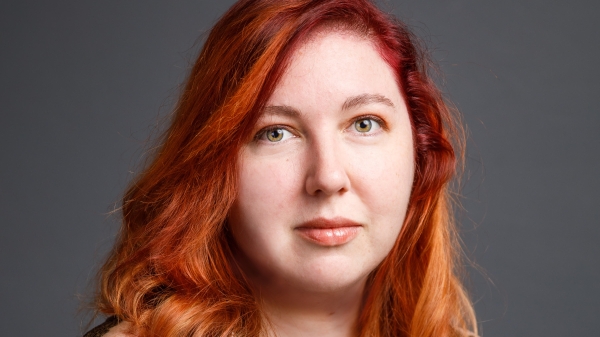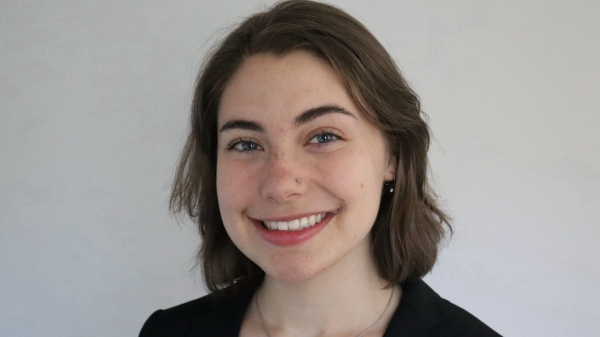$2M grant to improve tribal college and career readiness

The newly awarded U.S. Department of Education grant benefiting the San Carlos Apache Tribe and the Gila River Indian Community will prepare tribal students for higher education and their future careers. ASU photo
Following a mission to improve rates of postsecondary education enrollment and completion among tribal populations, $2.2 million in U.S. Department of Education grant funds were recently awarded to Arizona State University to use toward its “Invest in Our Children; Invest in Our Future” initiative.
The driving mission behind the four-year grant is to prepare future leaders of the San Carlos Apache Tribe and the Gila River Indian Community for careers that will lead to personal success and the betterment of their tribes.
The grant is the result of combined interdepartmental efforts from ASU Career Services, Access ASU and the Office of the President, as well as the American Indian Chamber of Commerce.
“It's in the charter, and that's often what we'll go back to, that idea of taking responsibility for the communities that we serve,” said Jacob Moore, co-principal investigator for the grant and vice president and special advisor to the president for American Indian affairs at ASU. “And then also measuring our own success, not by whom we exclude, but who we include.”
Moore is responsible for the intergovernmental affairs between ASU and tribal nations and communities, working to strengthen those relationships and make higher education more accessible for American Indian/Indigenous students.
“Prior to coming to ASU, I served on the Arizona State Board of Education for eight years and, over time, recognized that our kids are almost at the bottom in the K–12 system in terms of their proficiency of math, science, reading — whether they're urban or reservation,” Moore said. “How do we best address the needs of underserved populations? And I think what's described in this grant is the right set of tools to really help acclimate kids in our tribal communities to see that college is a viable option for them.
“And I see this really as a pilot project, because there's 22 tribes in the state and we're supporting two, but clearly what works here would certainly help support the work that we do with the other tribes as well."
With all four of Arizona State University’s campuses located on ancestral territories of Indigenous peoples, including the Akimel O’odham (Pima) and Pee Posh (Maricopa) Indian communities, the university has a long history of supporting and partnering with tribal populations.
The “Invest in Our Children; Invest in Our Future” grant will impact more than 2,500 middle and high school students in the Gila River Indian Community and the San Carlos Apache Tribe.
"It is truly gratifying to be at ASU, a university that understands the importance of addressing this need. The potential social impact is tremendous," said Beverly Johnson, co-principal investigator for the grant and senior associate director of career readiness at ASU Career Services.
“One of the important missions of the grant is to encourage tribal youth to develop their career identities early. Middle school years are pivotal for students to explore their interests and lay the groundwork for their future paths," Johnson said. "Research indicates that, during this period, they begin to form an understanding of their preferences and potential career trajectories, even if they haven't pinpointed a specific profession.
"Our aim is to enhance their academic readiness, foster resilience to navigate obstacles — which is crucial — and guide them in crafting and pursuing a college and career plan."
In addition to college and career readiness plans, measurable objectives for the grant include tracking improvements to academic performance and enrollment in post-secondary education for San Carlos Apache Tribe and Gila River Indian Community students.
“We want to improve both Arizona merit scores in reading and math, and then also achieve an increase in high school graduation rates,” Johnson said. “And then increasing post-secondary education enrollment — so actually enrolling for either tribal college or university after high school.”
ASU will measure the outcomes of the four-year project using pre- and post- surveys of students and families, with the goal of expanding the same offerings to other tribal communities in the future.
Quintin Boyce, co-principal investigator for the grant and associate vice president of outreach for Access ASU, highlighted the deliberate, authentic and collaborative approach employed in developing enduring systems.
"Through this intentional effort, we're able to create sustainable models that can be replicated in other communities," Boyce said. "This collaborative endeavor represents a significant investment by the university, demonstrating genuine accountability to the communities we serve.
"By fostering collaboration across multiple units, rather than working in isolation, we unleash the true potential for impactful change."
Access ASU is dedicated to increasing access to higher education and preparing Arizona students for success through family engagement, strategic K–12 education and community partnerships.
"This opportunity further emphasizes ASU's commitment to engaging with the community in outreach and support," Boyce said. "For over two decades, ASU has invested in intentional K–12 pathway development, recognizing that while brilliance is evenly distributed, opportunity is not. This grant exemplifies our dedication to ensuring equitable opportunities for all."
The grant not only provides new opportunities for Indigenous youth — ASU will be hiring several grant-funded positions to support this important work, including program managers, instructional designers, technology specialists, an evaluator and up to 20 paid interns.
Those hired in the program will empower Indigenous students as they work on grade-level-appropriate college and career awareness and planning, presentations, counseling and activities that lead to personal success and the betterment of their communities.
About the program
"Invest in our Children; Invest in our Future" is a 100% grant-funded program in which $2.27 million dollars will be invested in the two partner communities, over a four-year period, through new programs or initiatives that supplement existing efforts to improve test scores, develop student resilience, and ultimately increase high school graduation rates and postsecondary enrollment of Indigenous students from rural communities.
More Sun Devil community

Nontraditional grad finds her passion in biochemistry
Editor’s note: This story is part of a series of profiles of notable spring 2024 graduates. After working as a graphic designer in the corporate world for seven years, Michele Costantino went back…

ASU grad tackles global challenges through applied math
Editor’s note: This story is part of a series of profiles of notable spring 2024 graduates. Isabel Haas embraces the “master of all trades'' approach when it comes to her education at Arizona State…

May grad Yash Raka’s roles included mental health advocate, student government senator, researcher and volunteer
Editor’s note: This story is part of a series of profiles of notable spring 2024 graduates. Yash Raka, who is graduating from Arizona State University in May, is most proud of his advocacy for free…